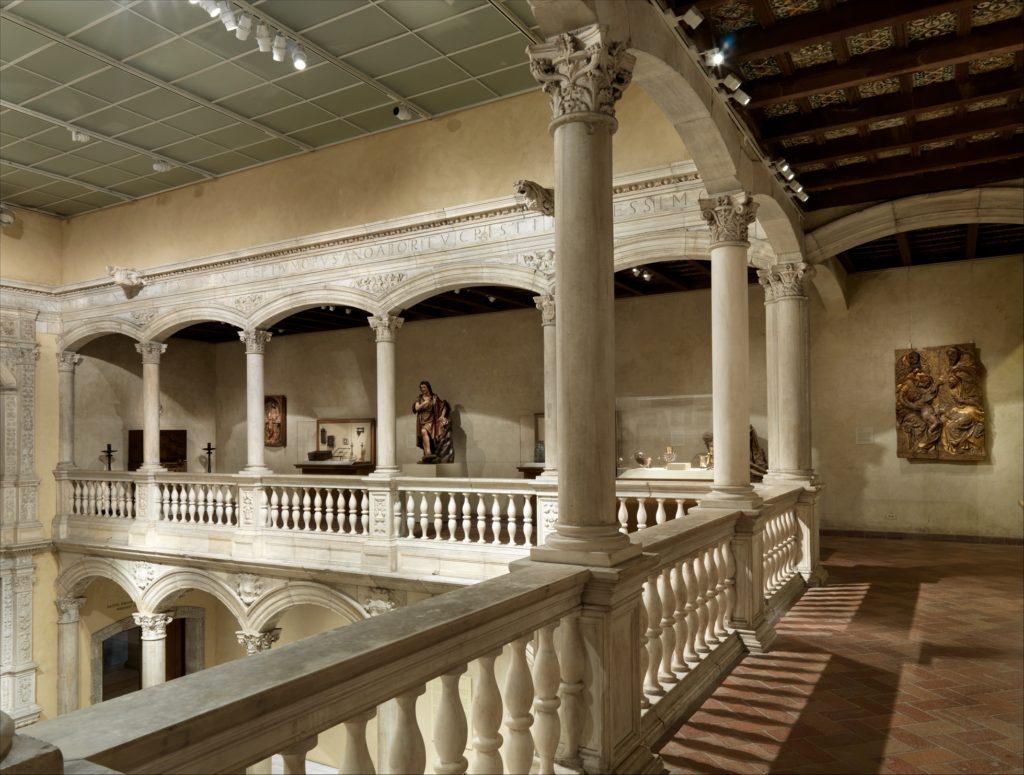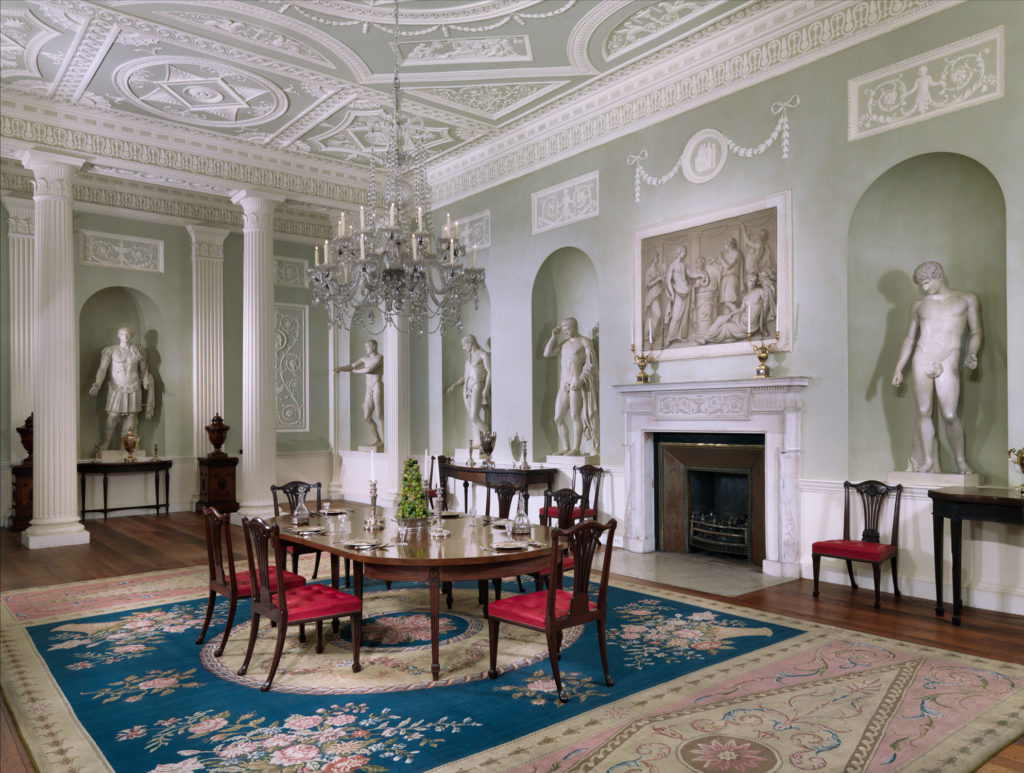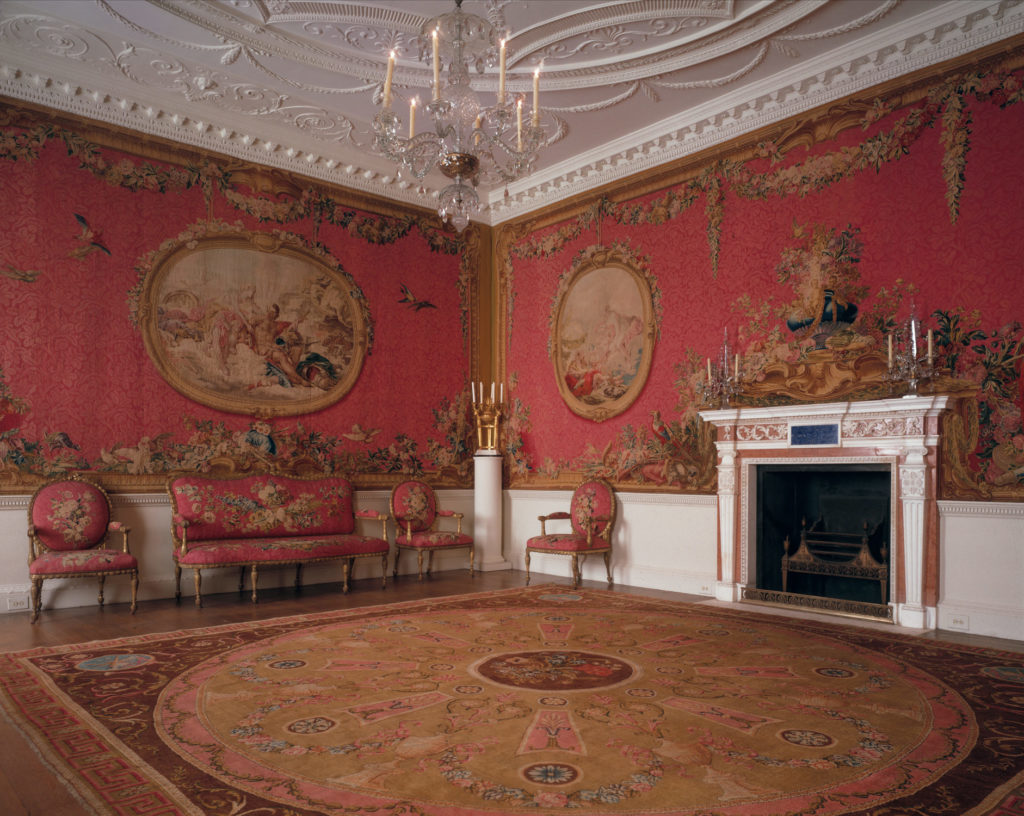The Met Fellowship Program draws leading and emerging scholars and practitioners from fields such as museology, academia, archaeology, education and scientific research. Since the program’s inception in 1951, the fellows’ research has deeply examined The Met collection and have significantly added to ongoing discourse in their fields.
This spring, current fellows present their research and explore related scholarly topics in a series of nine colloquia. I attended one of these sessions with the topic “Tracing Objects: Translation and Transmission” on 15 March 2019. The colloquia featured fellows Krisztina Ilko, Tommaso Mozzati, Max Bryant, Brian Martens, Georgios Makris, Maria Harvey and Chassica Kirchhoff.
New Evidence on the Original Materials, Former Construction, and Late Collecting History of the Patio of Vélez Blanco
Tommaso Mozzati, Andrew W. Mellon Fellow, Department of European Sculpture and Decorative Arts

Mozzati’s research examines the marble patio originally part of the Castillo de Vélez-Blanco, now housed in the entrance of The Met’s Thomas J. Watson Library to showcase the museum’s Italian Renaissance statues. The Patio of Vélez Blanco was built at the beginning of the sixteenth century by Pedro Fajardo y Chacón and remains a matter of conjecture today. Mozzati’s archival investigation led him to an unpublished drawing from 1805 that shows the patio’s original composition, in situ in the Spanish fortress. Reflecting on this drawing, Mozzati highlighted questions of authenticity as with little to no archival records before, the changes made over time with the movement of the patio can only be supposed. The drawing differed significantly from the patio in The Met with various additions and shifts, emphasizing the compromised state of the original and the mutability of art to fit the whims of the owner. Mozzati thus brought up the idea of ‘trans-content’ with regards to the patio’s importance in the context of early modern Spanish architecture and its new meaning and significance now that it is situated in Fifth Avenue.
In addition to archival research, Mozzati examined the provenance of the marble used in the current iteration of the patio seeking to use scientific analysis to determine the structure of the courtyard before its sale in 1904 to French dealer J. Goldberg. I found Mozzati’s research particularly interesting in his multifaceted approach in studying the history and authenticity of the patio. Mozzati lamented that the patio is now a mere reminder of the original though still prized for its sculptural and architectural value in the context of the Spanish Renaissance. It is often taken for granted the role of museums to present authenticity and truth. There is much to learn in constantly questioning the information I am presented with even with respectable organizations and institutions.
Imported Art and Design in the Early Practice of the Adam Brothers
Max Bryant, Andrew W. Mellon Postdoctoral Curatorial Fellow, Department of European Sculpture and Decorative Arts


The Adam brothers created exemplars of design, composite period displays that were an important stage in the development of modern museum culture. Bryant studied two of their displays from late-eighteenth century London: the tapestry room from Croome Court and the dining room from Lansdowne House, now being reconstructed in The Met’s new British galleries. Period rooms afford the museum visitor a chance to experience the furnishings, objects and decor within as related to each other in time, place and style in a way that isolating them cannot. Though many such rooms were originally designed as a proof of opulence, the objects within might not be curated well but fulfilled the aesthetic requirements.
Museums now question the contemporary resonance of such period rooms, if aesthetic quality or historic quality takes greater precedence. A moral element has now emerged that raises issues of populism, imported luxury and the attachment to the past.
To Conclude,
Many of the fellows had brought up issues of the transmission and translation of art between cultures in their presentation, befitting the overarching theme of the event. Their research took in depth studies of The Met’s collection in relation to various themes, locations and histories. As such, misinformation seems a underlining hindrance to their research with either little archival resources or when the translation of art could have had more verification.
Adorno states the authentic is a judgement of value and a manichean one that pits unobjective concepts against each other and leads to constant hairsplitting (Adorno, 1973). The criteria of authenticity is not necessarily objective where the museum seems an inauthentic device trying to frame ‘real’ or ‘authentic’ objects and ideas within contexts determined by them. Museums might argue that they are the last guardians of the past, in possession of relics for the benefit of scholars to study and people to view, where their reconstruction of historical sites can now be easily marveled all under one roof.
The event has opened my eyes to various museology and art history issues that I think also apply to information science where information verification and authenticity have become large issues in the community.
References
Adorno, T.W. (1973). The jargon of authenticity. Evanston: Northwestern University Press.
Bruner, E. M. (1956). Cultural Transmission and Cultural Change. Southwestern Journal of Anthropology. 12(2): 191-199. https://doi.org/10.1086/soutjanth.12.2.3629114
Hede, A. & Thyne, M. (2010). A journey to the authentic: Museum visitors and their negotiation of the inauthentic. Journal of Marketing Management. 26(7-8), 686-705. https://doi.org/10.1080/02672571003780106
Hooper-Greenhill, E. (2000). Museums and the interpretation of visual culture. London: Routledge.
INFO 601-02 (Assignment 3 / Event Attendance) – Jamie Teo